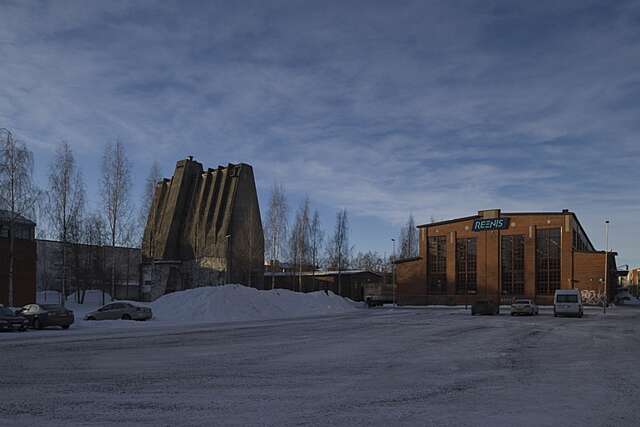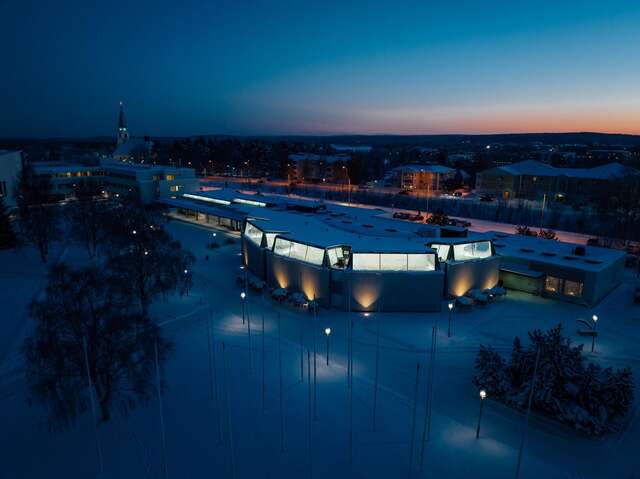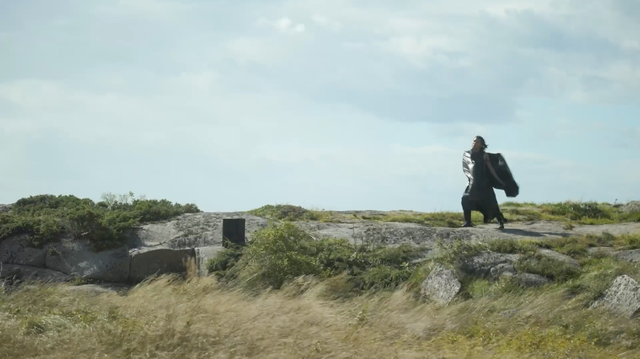The future of the land that grew from forests is in wood – Wood construction supports Finland’s carbon neutrality targets
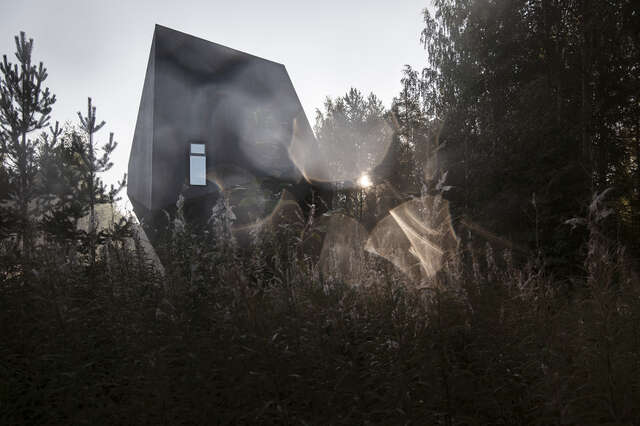
Ateljé Sotamaa, Meteorite, photo: Tuukka Koski
The State of Finland has been promoting wood construction since the 1990s. The priority areas of the ongoing Wood Building Programme 2016–2023 are in urban development, public buildings and increasing regional skills bases. Our head of communications, architect Miina Jutila interviewed wood specialists from the Ministry of the Environment.
Each government of Finland since 1994 has been promoting wood construction. In the 1990s, the emphasis was on wood export; these days, the main motivation is combating climate change. The Programme of Prime Minister Sanna Marin’s Government sets achieving carbon neutrality by 2035 as Finland’s target. The Programme of Petteri Orpo, who was elected prime minister in June 2023, does not commit to a specific year, but the long-term goal is carbon negativity.
In today’s Finland, the built environment accounts for half of the consumption of raw materials and 40 per cent of energy use while causing one-third of greenhouse gas emissions. Reducing the carbon footprint of housing and construction has been recorded in the government programme, and Finland’s national architectural policy programme 2022–2035, Towards Sustainable Architecture, presents measures through which architecture, construction, and land use can influence solving climate challenges.
Key measures include extending the lifecycle of existing buildings through renovation and utilising natural construction materials in new construction. Hence, Finland’s intent is strong in promoting wood construction.
According to Petri Heino, the programme manager of the Wood Building Programme 2016–2023, sustainable consumption and production are the premises for climate change mitigation.
“We must reduce consumption at the global level. In construction, the use of renewable and recyclable building materials must be promoted. The use of wood has a positive impact on the environment, and the role of the circular economy will also grow”, Heino estimates.
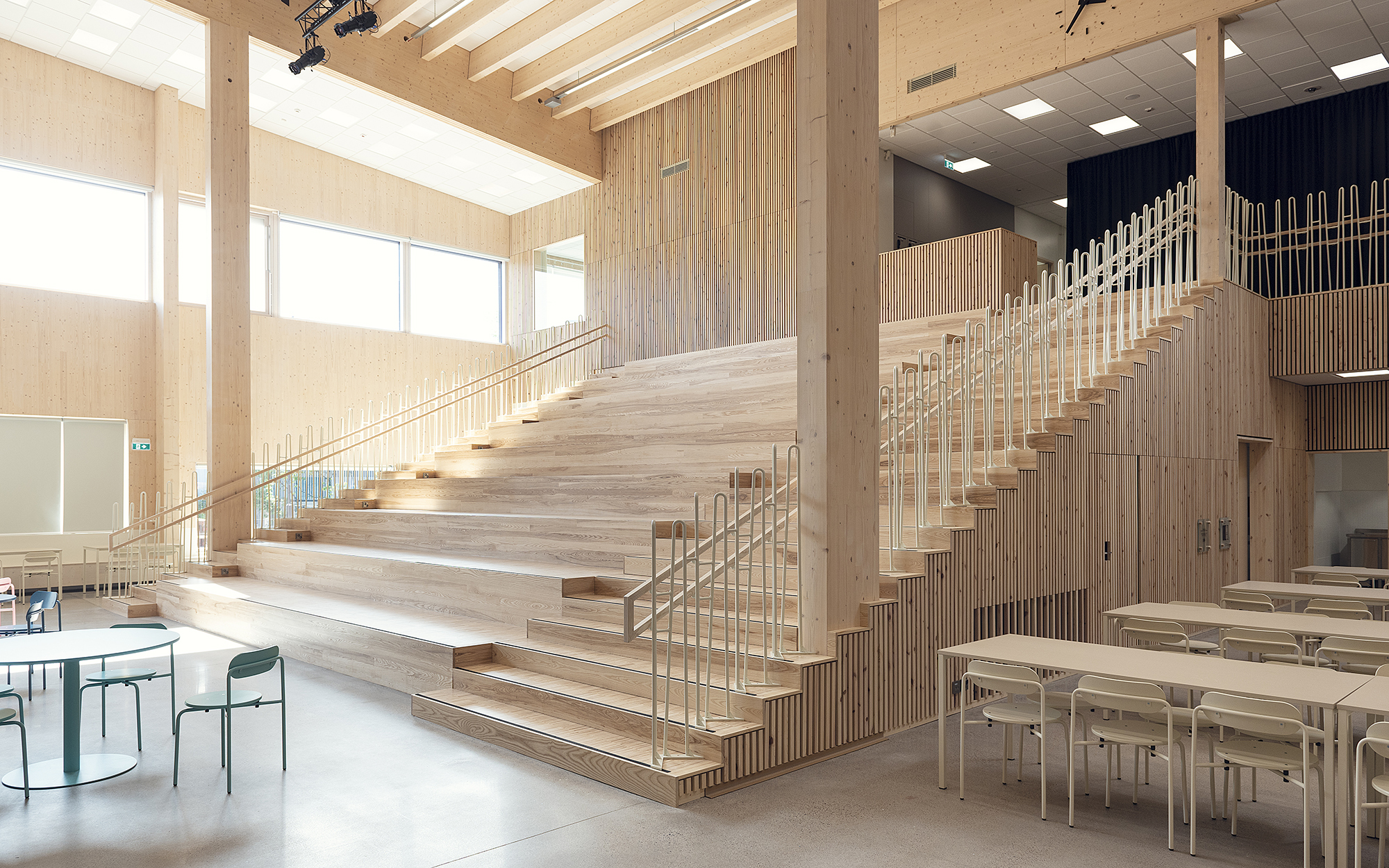
Focusing on large-scale wood construction
Nearly 90 per cent of the single-family, semi-detached and terraced houses constructed in Finland are already built of wood, and around 30 per cent of the timber used in Finland is used in the construction of low-rise buildings. However, the construction of larger-scale buildings, such as blocks of flats and public buildings, would enable achieving considerably bigger impacts. Indeed, the focus areas of the Wood Building Programme include increasing the use of wood in urban development, the construction of public buildings, and large structures such as bridges and halls.
“In public construction, such as schools and day-care centres, wood construction already accounts for around twenty per cent, although the goals set for this year were even higher. Recent uncertainty in material flows, as well as the slowness of the change in attitudes in the municipal sector, have stood in the way of faster development”, Petri Heino considers.
There is demand for school buildings constructed of wood, and several timber schools have been built around Finland in recent years. Good indoor air quality and the warm atmosphere created by wooden surfaces are considered among the features that make wood appealing. The Finnish-Russian School of Helsinki* (AFKS Architects, 2021), one of Finland’s biggest wood-framed schools, is a recent example. The world’s biggest log school, Monio* (AOR Architects), is currently under construction in Tuusula and is set to be completed for the autumn semester of 2023.
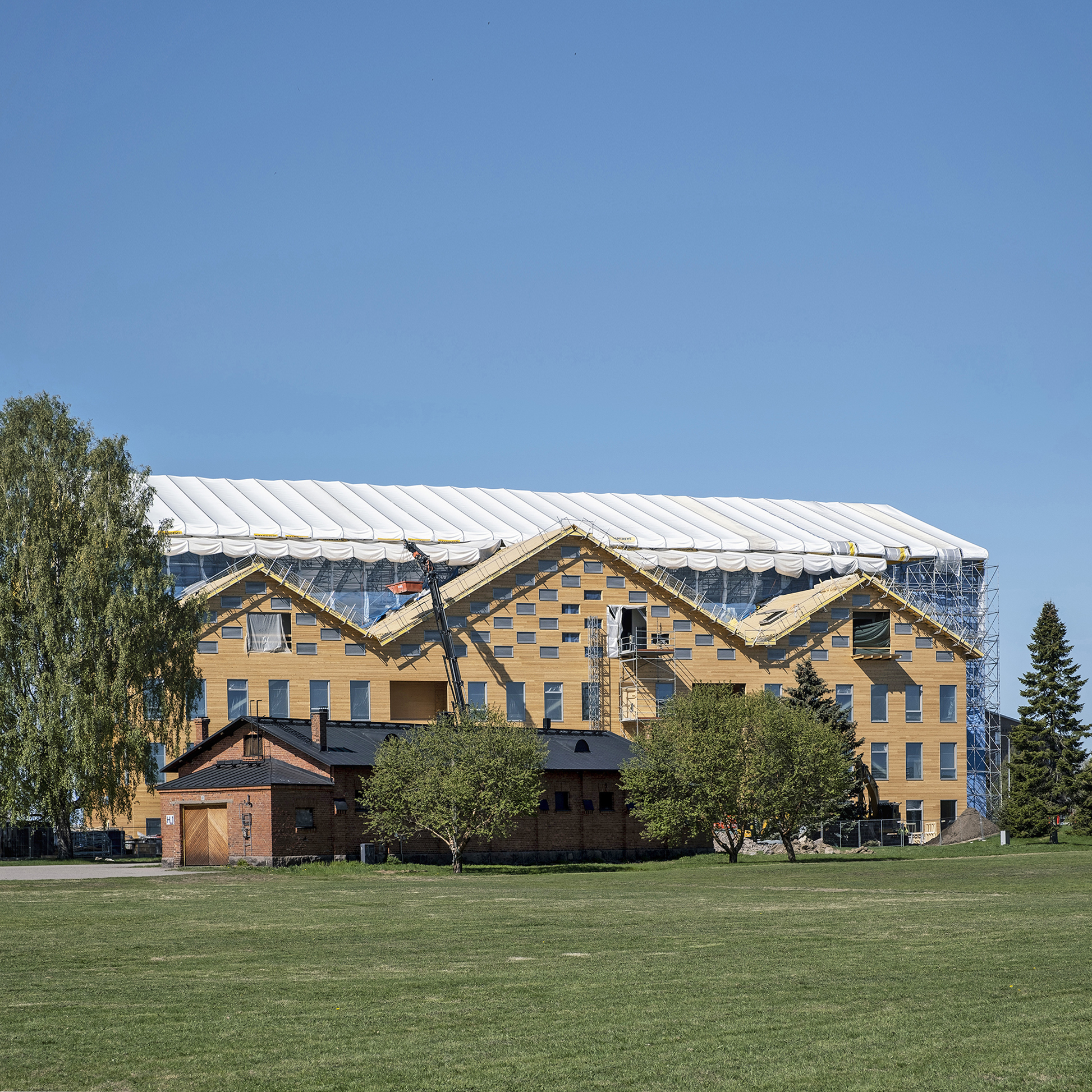
From a carbon neutrality perspective, there is particularly big growth potential in the production of wood-framed blocks of flats. Annually, around 1,500 dwellings in wooden blocks of flats are completed in Finland, while the total number of completed dwellings in blocks of flats was over 26,000 in 2020. In addition, slightly over 9,000 dwellings were built in single-family, semi-detached and terraced houses.
Spread of wood-framed blocks of flats requires new standards
Finland has long experience in industrially prefabricated low-rise buildings and successful production and manufacturing of modular houses. Indeed, the previous Wood Building Programme running from 2004 to 2010 aimed at increasing the construction of low-rise houses alongside developing official steering mechanisms.
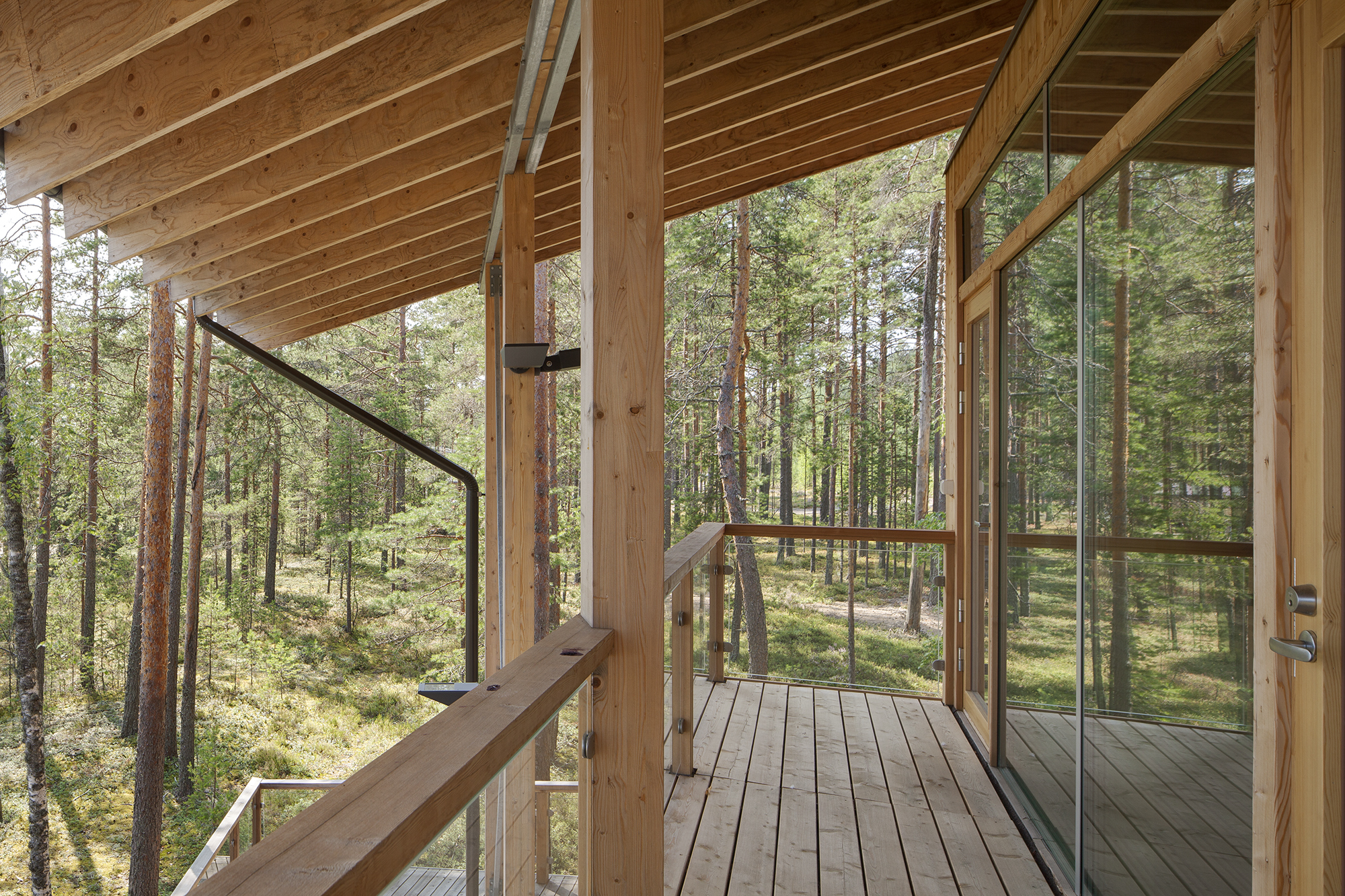
Meanwhile, there is no long tradition of wood-framed blocks of flats, and no established standards have yet emerged for their production. According to the architect Simon le Roux, project specialist in the Ministry of the Environment’s current Wood Building Programme, Finland needs more experts in high-rise timber construction, and industrial processes could make better use of information technology.
“The starting point should be an understanding of value production for all the key actors in the network at the different stages of design, manufacture, construction and building use”, le Roux notes.
“Standardising the production of wood-framed blocks of flats requires increasing the capacity of construction and related competence. Workable practices are already available for wood construction based on prefabricated units and modules, but these are mainly applicable to housing units with small dwellings and highly repetitive space solutions such as student housing”, le Roux continues.
Through the Wood Building Programme, the government has allocated discretionary grants to housing construction development projects and activated developers. Renovations combined with infill development by adding floors as well as office buildings are important building types for increasing the use of wood in construction. A good example of this development is, for instance, a large, wood-framed office and commercial building* currently planned for Katajanokka, Helsinki, which will serve as the headquarters of the Stora Enso forestry company (Anttinen Oiva Architects, 2024).
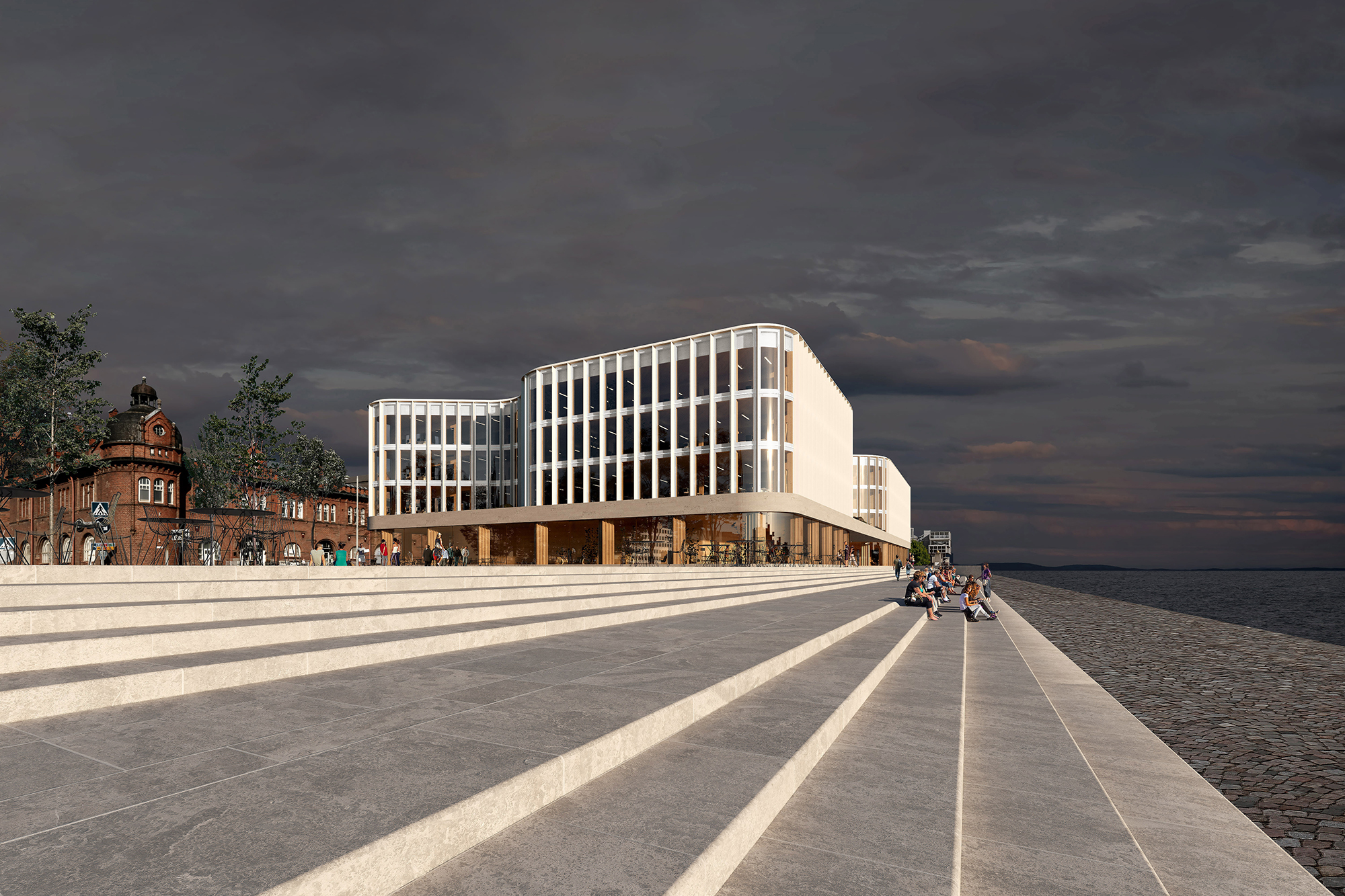
The decisions affecting wood construction are made in municipalities
While Finland’s Wood Building Programme supports projects, research projects and reports that increase competence, its main task is to serve as the messenger of wood construction. The strengthening of regional skills bases is one of the focus areas of the programme. This involves collaboration between the local public sector, education and development organisations and businesses to develop competencies that will also be in demand elsewhere. The biggest decisions affecting wood construction are made in cities and municipalities.
“Planning guides construction, and the town plan largely determines the character of a new area. In recent years, aiming at densely populated neighbourhoods and high efficiency has resulted in buildings with deep frames and small, dark dwellings, and this trend has also been reflected in wood construction. We need to develop new solutions to enable municipalities to create better cities and environments, including those built of wood”, le Roux says.
Many Finnish cities and municipalities have already taken action and integrated wood construction into their programmes – and some have even prepared plans for neighbourhoods entirely built of wood. For instance, in Helsinki, two new wooden neighbourhoods are nearly completed: Puu-Myllypuro*, a small-scale area in eastern Helsinki, and the Honkasuo urban village in northwest Helsinki, which is also where the Kuninkaantammi area consisting of wood-framed blocks of flats is being constructed. Another area consisting of wood-framed blocks of flats is planned next to Puu-Myllypuro and will offer housing for 2,700 residents.
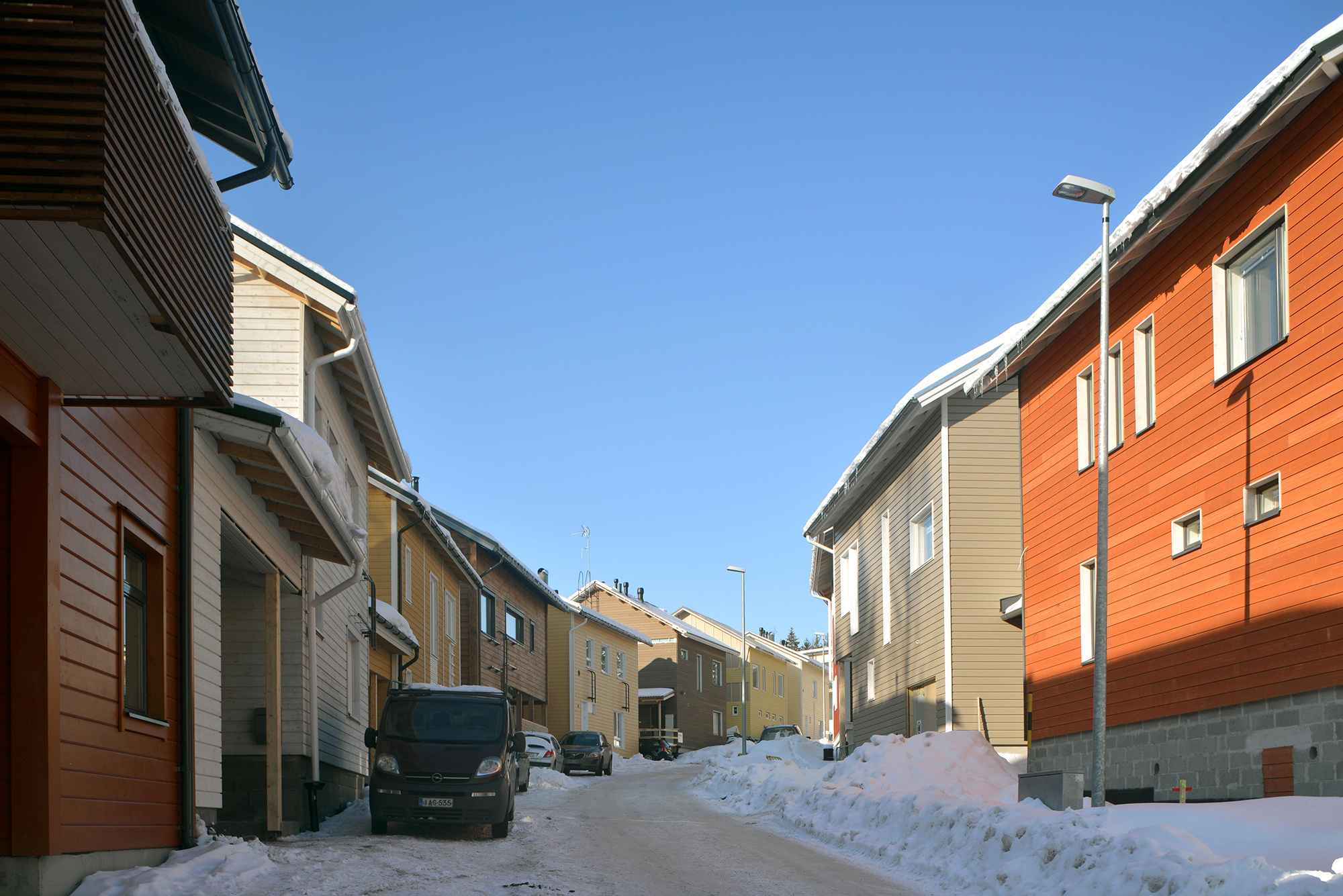
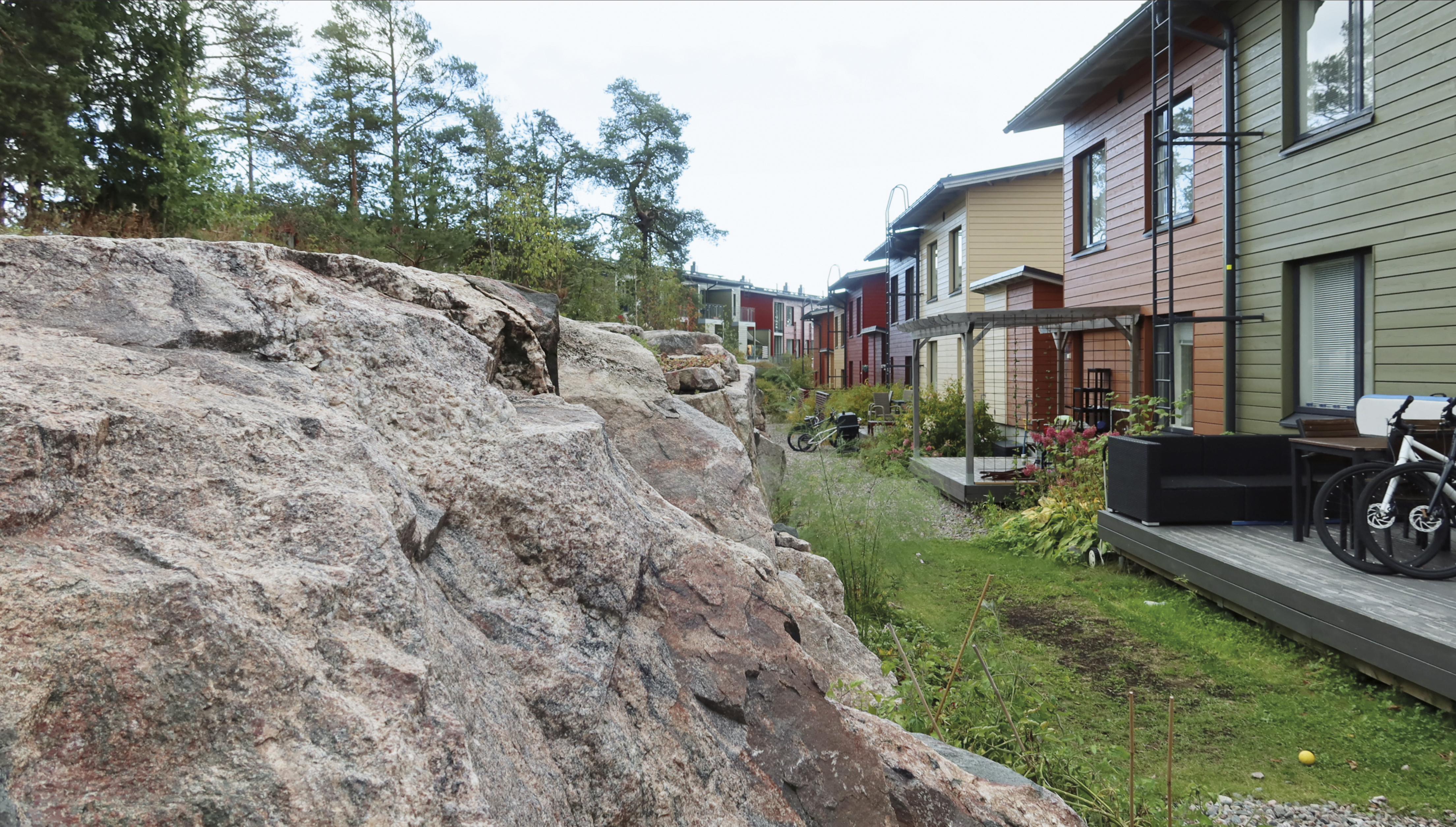
In addition to the currently constructed and planned areas, Helsinki has commissioned a concept and reference design for a model block of flats constructed of wood (Make 2.0). This standardised block of flats designed by Harris–Kjisik Architects lends itself to duplication and variation to also suit various infill construction projects. The Make 2.0 development project aims to make design and construction processes smoother.
A lot is going on in cities around Finland
While several wood construction projects are ongoing in the Helsinki metropolitan area, Tampere is a true model city for wood construction. This is largely the outcome of the key role that Tampere University plays in the education, research and development of wood construction, which is carried out in close interaction with companies in the wood and construction sector. Professor and architect Markku Karjalainen, who in 2002 defended his doctoral thesis on the construction of timber-framed blocks of flats, has been an essential driver for this development. In 2021, the postgraduate school of industrial wood construction was launched at Tampere University's Faculty of Built Environment, and several doctoral theses are currently underway in the programme.
Tampere has a highly ambitious programme to promote wood construction, which has also produced visible results. A goal was set for plots assigned by the city that the share of wooden blocks of flats of all new blocks of flats would be 10 per cent in 2021, 15 per cent in 2025 and 20 per cent in 2030. The city has actually exceeded its impressive target: already in 2020, the share of building permits for wooden blocks of flats had already climbed to 14 per cent. Finland’s biggest area comprising wood-framed blocks of flats is currently under construction in the Isokuusi neighbourhood in Vuores, Tampere. The area will have a total of 1,500 dwellings in wooden blocks of flats.
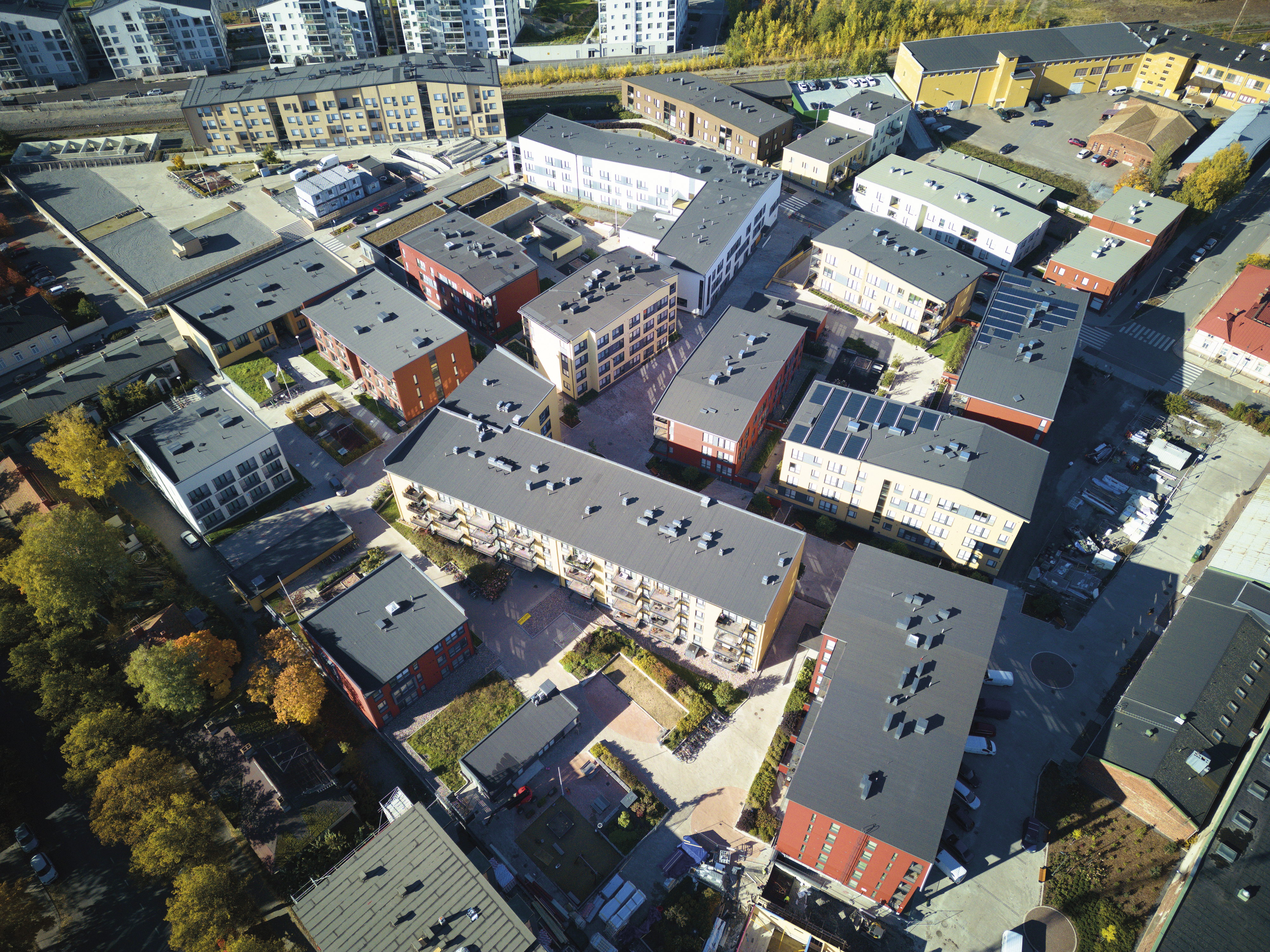
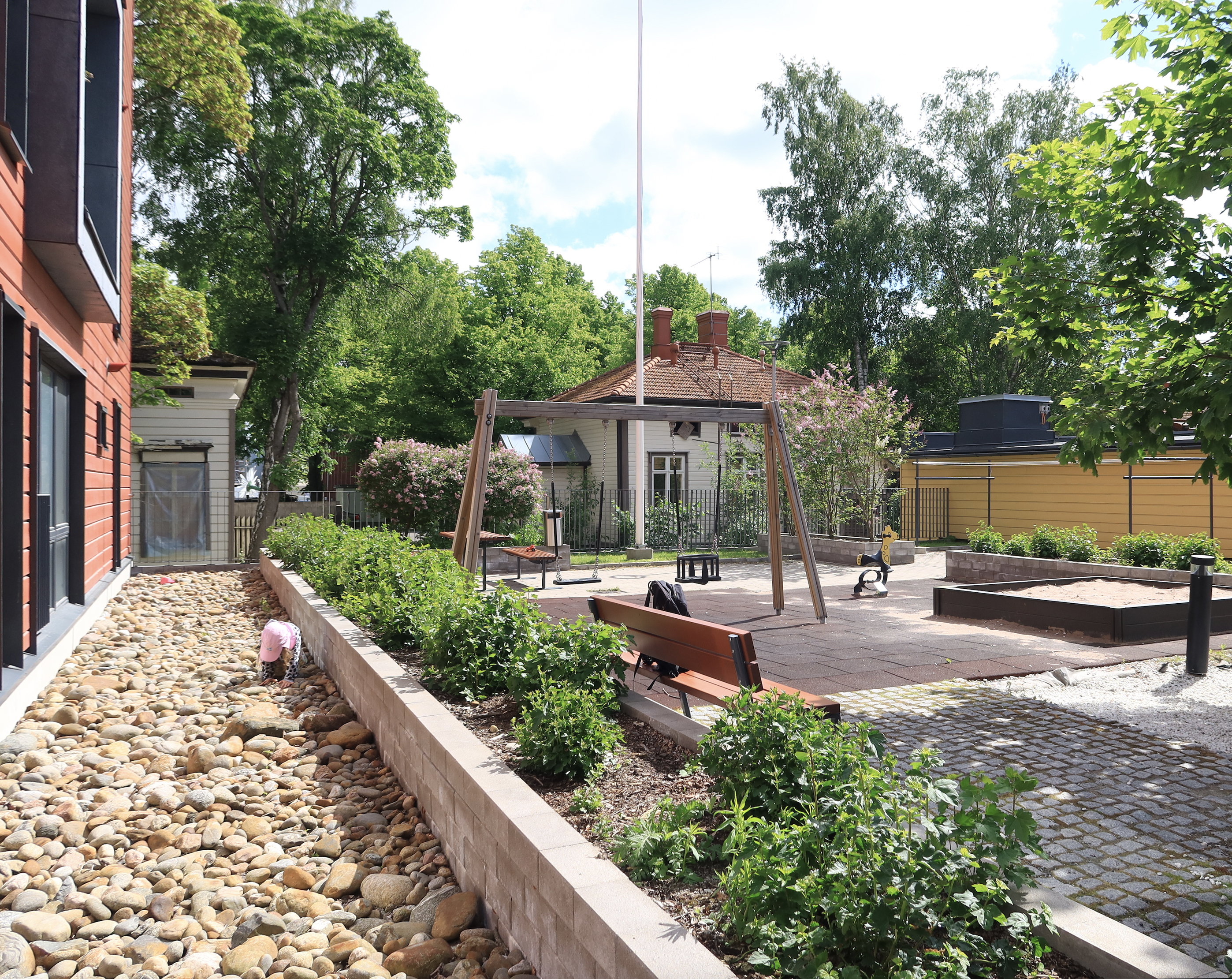
Oulu, Finland’s third city that offers university education in architecture, has also been working actively to promote wood construction for a long time. In 1997, the city in northern Finland launched the process of designing the first contemporary wooden neighbourhood as a part of the national Modern Wooden Town project. At around 12 hectares, Puu-Linnanmaa was Europe’s largest neighbourhood consisting entirely of wood construction at the time of its completion. The area of experimental construction consisting of wooden blocks of flats with 2–3 floors has around 350 dwellings.
Another pilot of the Modern Wooden Town project is nearing completion in Turku, South-West Finland. The Linnanfältti* area, with yellow and red wood-framed blocks of flats, is situated near the medieval castle, among old wooden buildings characteristic of Turku. When completed, the neighbourhood will have nearly 800 new dwellings.
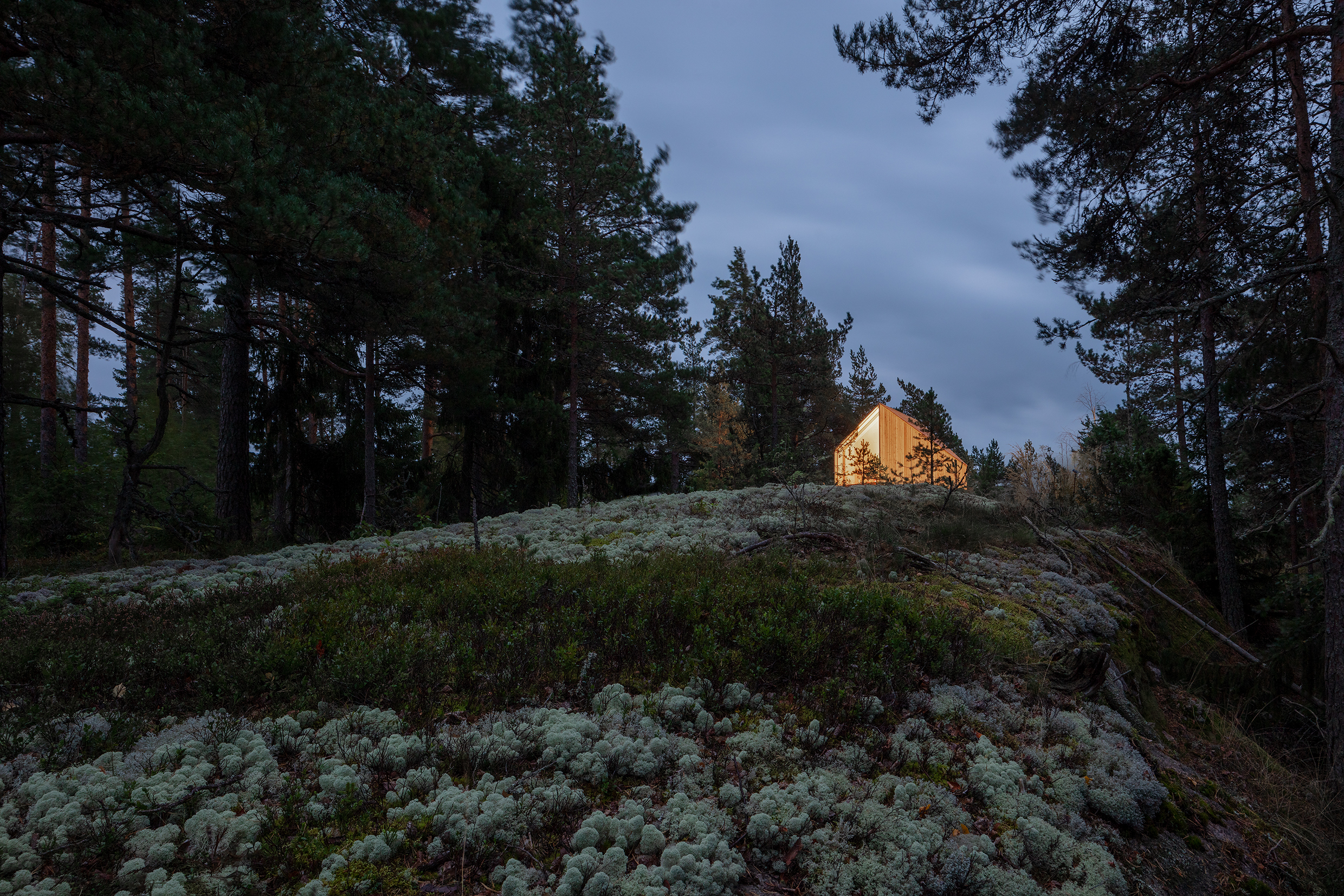
The forest is part of the Finnish psyche
Three-quarters of Finland’s total land area is covered by forests, and 12 per cent of the forest is protected in some way. Is there a conflict between the increase in wood construction and global aims such as the growth of carbon sinks and the preservation of biodiversity?
“When a tree is felled in Finland, it is utilised extremely thoroughly. Saw logs end up in the sawmill and panel industry, and fibrewood and some of the side streams of the wood product industry are used in the pulp industry. As wood construction becomes increasingly common, we can expect a growth in the share of timber used in construction of the total flow of timber. As a result, the increase in wood construction may not require an increase in felling”, explains Petri Heino.
“The wood used in a building will absorb carbon at least for the entire building life cycle. New forest replacing trees felled at the right age is a more effective carbon sink than an old forest that is no longer growing. Of course, also forest protection is important for reasons such as maintaining biodiversity”, Heino continues.
Forestry is Finland’s second-largest export industry, and the forest is an important source of livelihood for many Finns. But that is not all the forest is to us: it is part of the Finnish psyche.
“Forest has many meanings that affect our well-being. It takes a long time, around 80 years, for a forest to grow, so the decisions we make have long consequences”, says Simon le Roux.
“And any changes are slow to take effect; for instance, it takes time to see the change in the amount of decayed wood achieved by improved forest management practices”, Petri Heino adds.
“In addition to wood construction, we must also invest in other bio-based materials and carbon-efficient construction materials, such as cutter shavings generated as waste in the wood products industry and clay. Increasing the use of recycled materials also means that we must learn to tolerate the imperfection of materials”, le Roux continues.
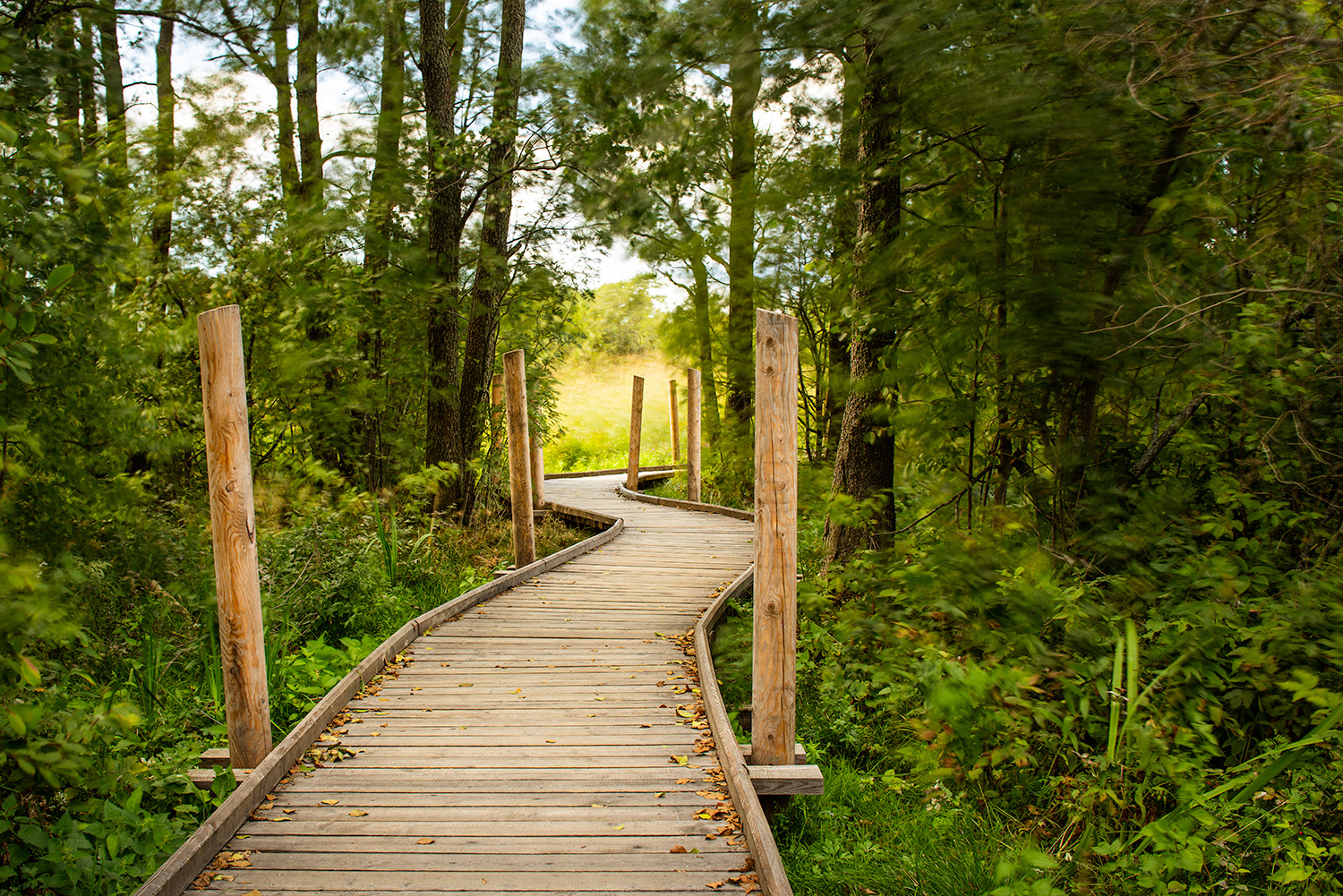
Small country’s gift to the world: competence in wood
Finland has well-operating and sustainable forestry on a global scale. There is a global demand for timber, and it would make sense to increasingly use Finnish wood as timber processed for construction instead of as disposable cardboard boxes for online retail. But even still, Finnish timber alone would not be able to correspond to the global demand. Instead, there is a need to increase forest growth and responsible utilisation everywhere. Finland would have a lot to give in this context.
“We have extensive competence in the forestry and forest products industry, and high-quality research and development efforts are carried out in Finland. Rather than just limiting ourselves to timber, we should export this competence to the world”, says Petri Heino.
The future of wood construction is based on responsible forestry. Digitalisation extending from processes to production and industrial prefabrication is paving the way for wood architecture. In these areas, Finland is a pioneering country. Similarly to our past, also our future will be built of wood.
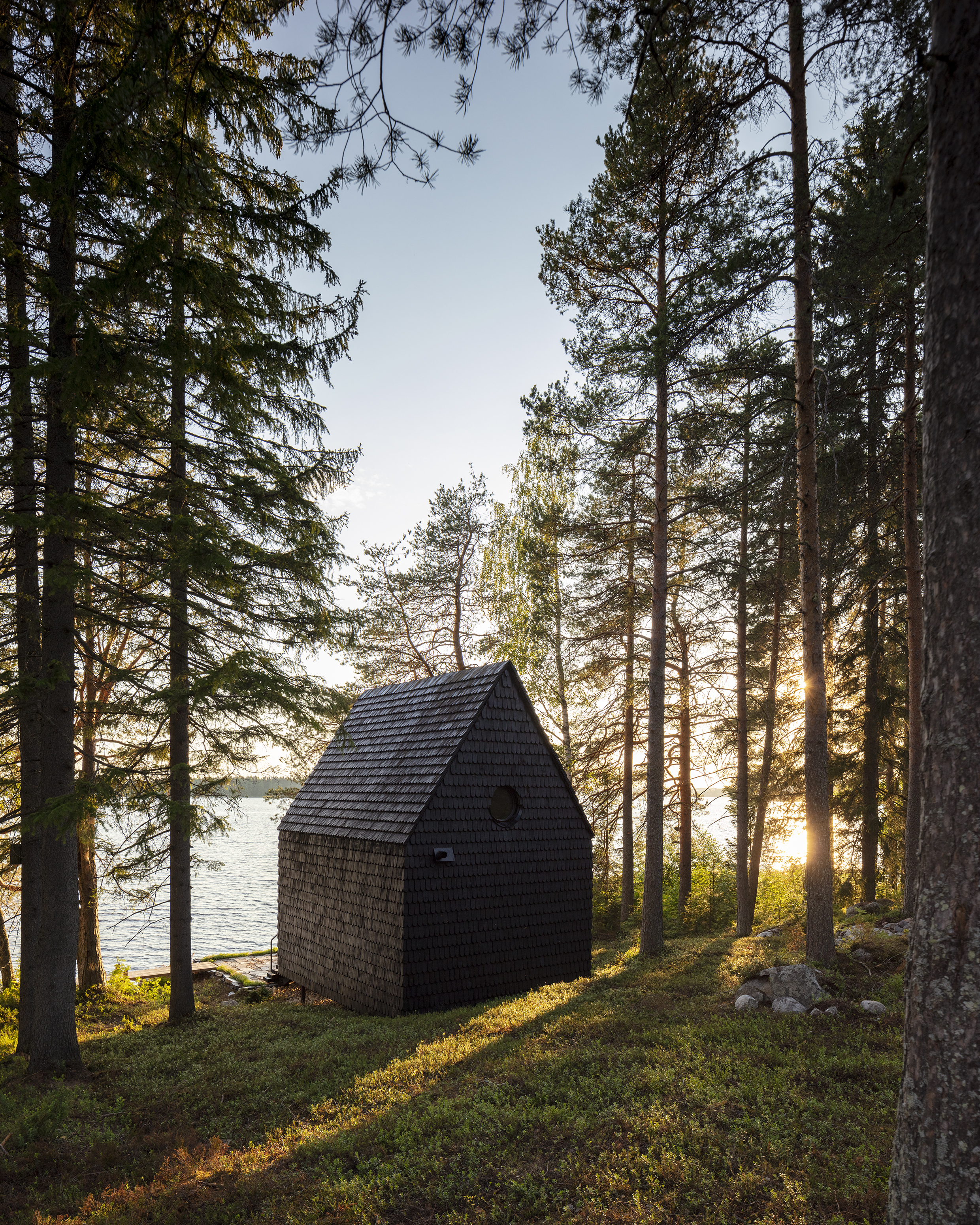
* The project is presented in the Future Finland Built of Wood series.
